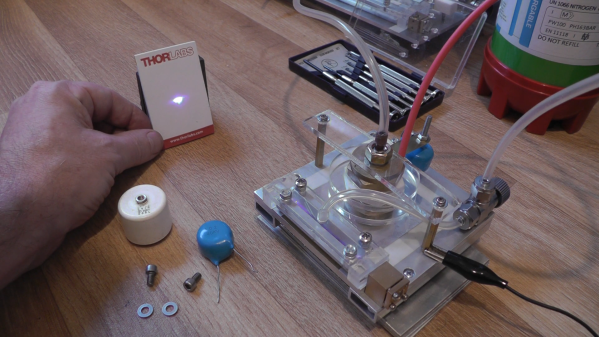In theory, batteries and capacitors are fairly simple. One stores energy chemically and the other stores energy in an electric field. In practice though, building an energy storage device that has a practical amount of energy density is delicate, complex work. But if you have access to a few chemical compounds it’s actually not too difficult to produce useful batteries and electrolytic capacitors with the use of ionic liquids.
Ionic liquids are conductive liquids with a few other important qualities. Almost all of the ones shown can be built with relatively common compounds, and most of the products have advantageous physical qualities, making them stable and relatively safe for use. With some equipment found in a chemistry lab it’s possible to produce a wide variety of these liquids without too much hassle (although one method outlined uses an inert gas chamber), and from there batteries and capacitors can be built by allowing the ionic liquids to be absorbed into the device.
The video below shows the production of several of these devices and then illustrates their effects by running a small LED light. While they’re probably not going to be used to create DIY electric cars anytime soon, the production and improvement of atypical energy storage devices will be the key to a large part of the energy needs of society now and into the future, especially aluminum batteries like these.
Continue reading “Battery Of The Future, Now Buildable Yourself”




















